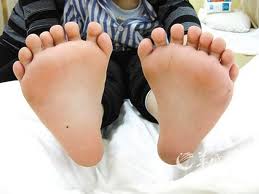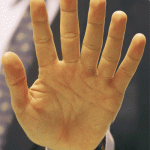How would we count if we had been born with 12 fingers in stead of 10?
The answer is easy to imagine: invent a symbol for “ten”, and another for “eleven”, and write “10” for “twelve”.
The use of 12 as a base for counting has some advantages: fractions like 1/3, 1/6 or 2/9 will result in a finite fraction in stead of things like 0,333333… , 0,166666… or 0,22222222….
However, we loose the simple notation 0.2 for 1/5, and 1/7 remains as complicated as usual.
In computer science, it is common to write “A” for “ten”, “B” for “eleven”, etcetera, up to “F”.
The value of 1 byte can thus be represented by 2 digits. ( And on top of that, conversion to binary numbers is much easier).
I had to think of that when I saw this image:

In any case, I made a programme in PHP to convert between bases.
The nice thing is that is also handles fractions, and detects repetitions of digits after the period.
